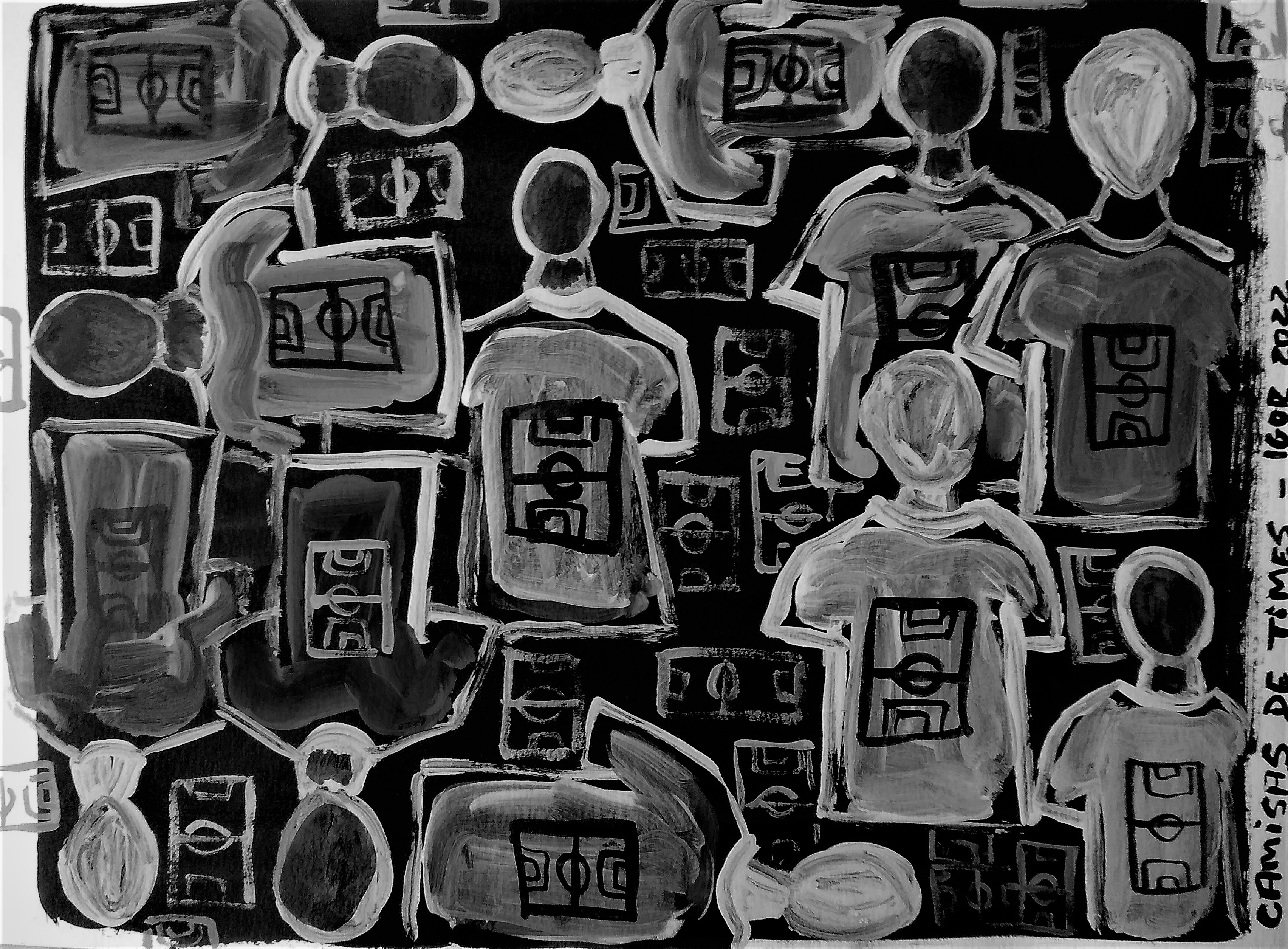Body, Hierarchy and Ways of Acting Esthetic, Politics and Ethics in “Barras Bravas” in Bogotá
Main Article Content
Abstract
The public constituted around football in Colombia can be characterized as follows: spectators, fans and supporters. For their part, the supporters have been grouped in “barras” and also in “barras bravas”. Each characterization depends on the affiliation and loyalty - assumed by each supporter - with the team and with the social group. In this aspect, the purpose of the article is: understand the ways of constituting the body for the organization of the hierarchy and its particular ways of acting among the fans, grouped in “barras bravas” of Bogotá. Thus, participation in the “carnaval” and the permanence in the “combate”, on the part of the supporters, demonstrate presence in the stands and on the streets to demonstrate the “aguante”. On the other hand, in the methodological aspect, the ethnographic field work allowed us to understand and describe the production, reproduction and diffusion of the meanings of the practices, from the experiences and the stories of the supporters.
Downloads
Article Details

This work is licensed under a Creative Commons Attribution 4.0 International License.
Autores que publicam nesta revista concordam com os seguintes termos:
1. Autores mantém os direitos autorais e concedem à revista o direito de primeira publicação, com o trabalho simultaneamente licenciado sob a Licença Creative Commons Attribution que permite o compartilhamento do trabalho com reconhecimento da autoria e publicação inicial nesta revista.
2. Autores têm autorização para assumir contratos adicionais separadamente, para distribuição não-exclusiva da versão do trabalho publicada nesta revista (ex.: publicar em repositório institucional ou como capítulo de livro), com reconhecimento de autoria e publicação inicial nesta revista.
3. Autores têm permissão e são estimulados a publicar e distribuir seu trabalho online (ex.: em repositórios institucionais ou na sua página pessoal) a qualquer ponto antes ou durante o processo editorial, já que isso pode gerar alterações produtivas, bem como aumentar o impacto e a citação do trabalho publicado (veja O Efeito Acesso Livre).
References
ALABARCES, Pablo. Crónicas del aguante: Fútbol violencia y política. Buenos Aires: Capital Intelectual, 2012.
ANDERSON, Benedict. Comunidades imaginadas. Reflexiones sobre el origen y la difusión del nacionalismo. Ciudad de México: Fondo de Cultura Económica, 2011.
ARAGÓN, Silvio. “Los trapos se ganan en combate”: Una mirada etnográfica sobre las representaciones y prácticas violentas de la “barra brava” de San Lorenzo de Almagro. Lanús: Antropofagia, 2007.
BOHÓRQUEZ, Catalina. La música como dimensión simbólica del Carnaval. In: GONZÁLEZ, Marco. Carnavales y nación. Estudio sobre Brasil, Colombia, Costa Rica, Cuba y Venezuela. Bogotá: Corporación de Estudios Interculturales Aplicados, 2014, p. 256-267.
CASTRO, John. Carnaval, combate y jerarquía entre los hinchas que forman una barra brava de Bogotá. Debates en Sociología, Pontificia Universidad Católica del Perú, Lima, 51, p. 55-76, 2020.
CLIFFORD, James. Dilemas de la cultura. Antropología, literatura y arte en la perspectiva posmoderna. Barcelona: Editorial Gedisa, 2001.
CLIFFORD, James. Sobre la alegoría etnográfica. In: CLIFFORD, James; MARCUS, George. Retóricas de la antropología. Madrid: Ediciones Júcar, 1991, p. 151-182.
GEERTZ, Clifford. La interpretación de las culturas. Barcelona: Editorial Gedisa, 2003.
GIL, G. Hinchas en tránsito: Violencia, memoria e identidad en una hinchada de un club del interior. Mar del Plata: Editorial de la Universidad de Mar del Plata, 2007.
LOSADA, Flora. Notas de carnaval. Revista de Investigaciones Folklóricas, Buenos Aires, 22, p. 42-47, 2007.
MAUSS, Marcel. Sociología y antropología. Madrid: Editorial Tecnos, 1979.
MOREIRA, Verónica. Trofeos de guerra y hombres de honor. In: ALABARCES, Pablo. Hinchadas. Buenos Aires: Prometeo Libros, 2006, p. 75-89.
PALHARES, M; CABRERA, N, y SCHWARTZ, G. Apuntes para un estudio comparativo entre torcidas organizadas e hinchadas. Movimento, Rio Grande do Su, 20, p. 163-176, 2014.
PANFICHI, Aldo. Representación y violencia en el fútbol peruano: barras bravas. Contratexto, Universidad de Lima, Lima, 12, p. 151-161, 1999.
RESTREPO, Eduardo. Etnografía: alcances, técnicas y éticas. Lima: Fondo Editorial de la Universidad Nacional Mayor de San Marcos, 2018.
ZAMBAGLIONE, Daniel. Sobre Las Identidades: ¿Qué Es Una “Hinchada”? Educación Física y Ciencia, 10, 101-111, 2008.
